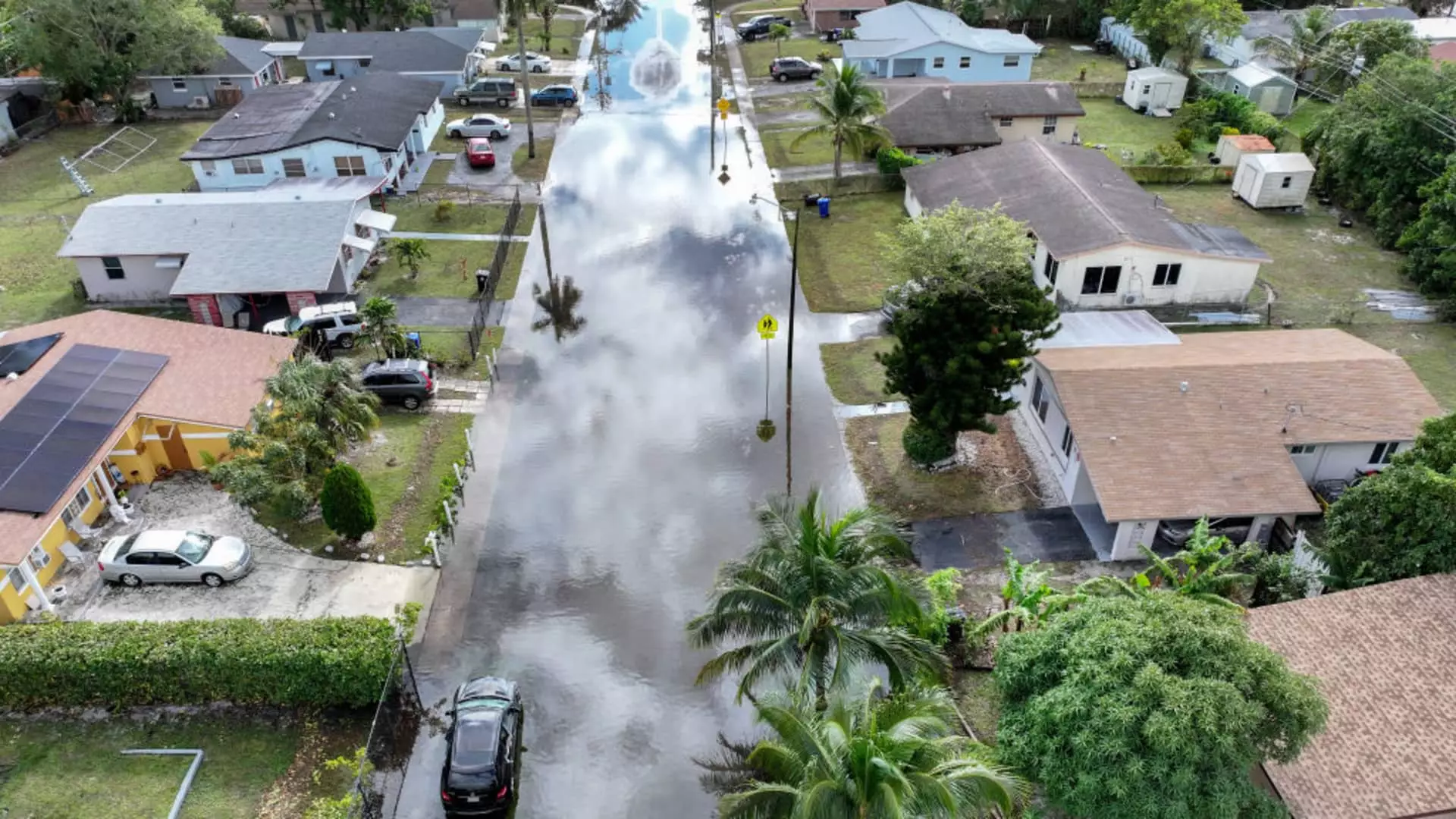As climate change escalates from a looming threat to an undeniable reality, the implications for the mortgage industry are beginning to surface. Traditionally, mortgage lenders have scrutinized a borrower’s debt-to-income ratio and credit score to determine their creditworthiness. However, a startling new factor has crept into this evaluation process: the tangible risks posed by climate change. The financial fallout from climate disasters is no longer a distant concern; it’s a present-day menace that is poised to redefine how lenders assess risk, ultimately impacting the everyday American homeowner.
A recent report from First Street, a climate risk assessment firm, reveals the stark reality that climate-driven disasters are already causing significant upheaval in the financial systems tied to homeownership. As storms and wildfires grow in both frequency and intensity, lenders who once operated under the assumption that property values are stable are now being forced to reconsider their strategies. Extreme weather events aren’t just natural calamities; they’re devastating economic liabilities, and it is the average consumer who will bear the brunt of this unfortunate evolution.
The Ripple Effect on Homeowners
Consider the harsh reality for those living in high-risk areas, such as Florida’s coastal regions. Homeowners there already face exorbitant insurance premiums that have skyrocketed in response to recent catastrophic storms. Many cannot absorb these inflated costs and are opting to walk away from their homes, with lenders left holding the bag. The ramifications are severe: banks could start experiencing unprecedented levels of foreclosure because homeowners are simply unable to afford the protection their properties need against the increasingly erratic forces of nature.
The First Street report doesn’t sugarcoat this grim scenario. Their analysis suggests that in a year marked by severe weather, lenders could suffer lost revenues to the tune of $1.21 billion—this figure might balloon to a staggering $5.36 billion over the next decade. Such numbers translate into higher borrowing costs for consumers, making homeownership an elusive dream for many. If climate risks become standardized in loan underwriting processes, that could mean a dip in credit scores for properties deemed vulnerable due to their geographic location. In essence, where you choose to live might soon severely limit your financial opportunities.
The Financial System’s Vulnerability
The entrenched habits of modern finance simply do not account for this new paradigm. Historically, institutions like Fannie Mae have financed the backbone of the housing market, yet they have remained alarmingly inert in adapting their models to reflect the looming specter of climate change. Although there were discussions of incorporating climate risk assessments into mortgage evaluations, the absence of policy changes has left many Americans’ investments teetering on the brink of disaster. The annual costs of climate-related events have surged by an astonishing 1,580% over the last four decades, according to the First Street report, emphasizing an urgent call to action that has largely gone unaddressed.
It’s disheartening to think about the financial institutions entrenched in their traditional methodologies, ignoring the systemic risks brought on by climate change. Jeremy Porter of First Street aptly states, “Our modeling demonstrates that physical hazards are already eroding foundational assumptions of loan underwriting.” If lenders continue business as usual, the repercussions will not only be catastrophic for vulnerable homeowners but will also place a significant strain on the larger financial system.
A Call for Urgent Reform
The urgency for reform cannot be overstated. As climate circumstances evolve, so too must our financial systems. It’s imperative that both lenders and policymakers adapt to this new landscape, employing a holistic approach that includes climate assessments as a norm rather than a mined specialty. Understandably, change takes time, but by bolstering regulations and implementing innovative underwriting processes that account for climate risks, we can begin to address this looming crisis head-on.
The call to incorporate climate change into lending practices challenges us all. It forces us to confront a bitter truth: Our collective love for coastal living may soon require sacrifices and adjustments that many are unprepared for. Climate change should not just be viewed as a looming disaster; it has become a daily reality that reshapes our financial decisions, homeownership opportunities, and, ultimately, the very fabric of communities across the nation.
The financial world stands at a crossroads; the choices made today will resonate for generations to come. We must take bold steps to ensure that our mortgage systems are not only sustainable but equitable for all, safeguarding the hope of homeownership that countless families cherish.

